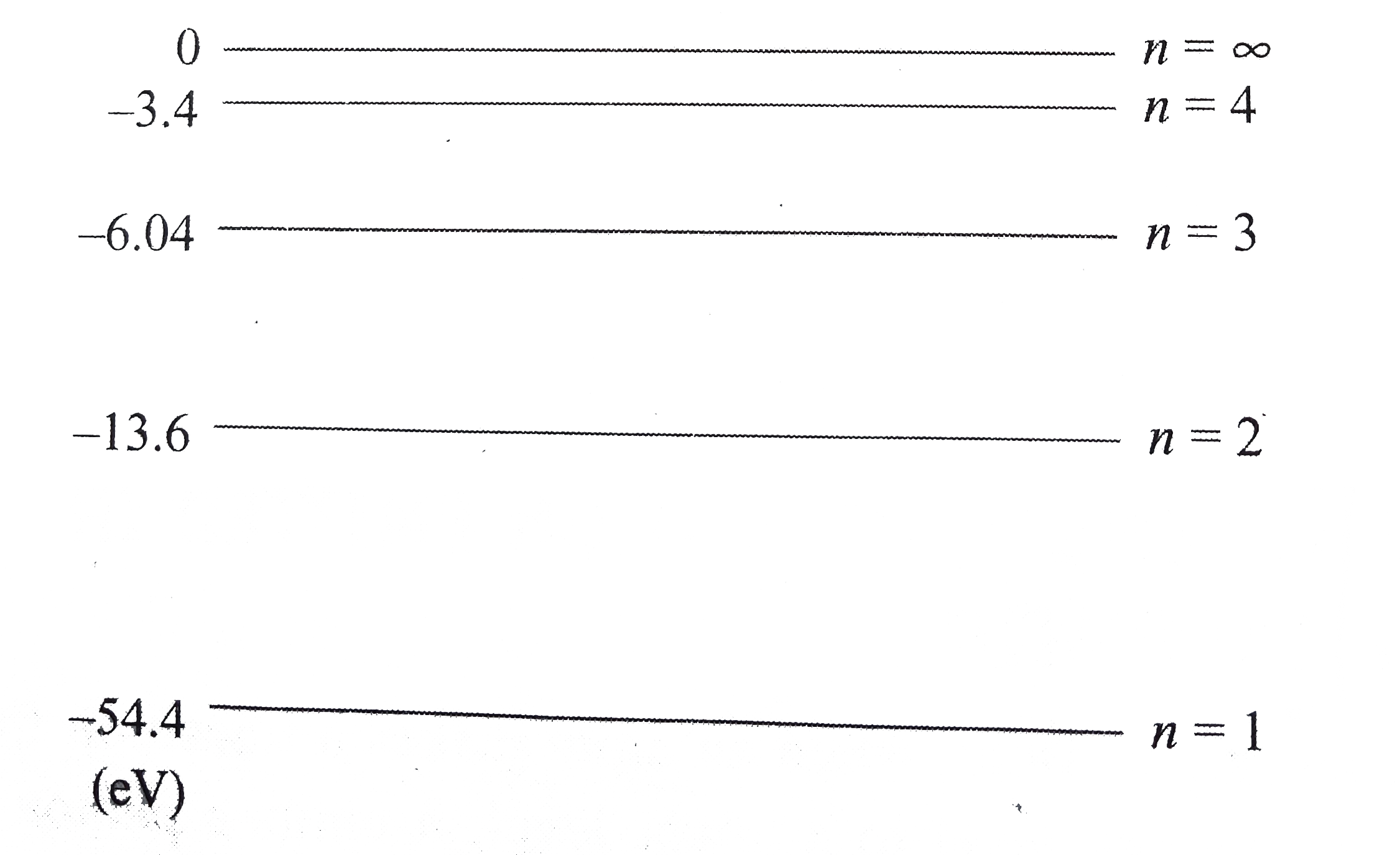The first excitation potential of a hypothetical hydrogen- like atom is 15V. Find the third excitation potential of the atom.
V electron volt
3V4 electron volt
4V3 electron volt
cannot be calculate by given information
The correct Answer is:C
first excitation energy is
Rhc(112−122)=Rhc34
34Rhc=VeV
∴Rhc=4V3eV
Topper's Solved these Questions
- ATOMIC PHYSICSBook:CENGAGE PHYSICSChapter:ATOMIC PHYSICSExercise:Multiple Correct
Explore 13 Videos
- ATOMIC PHYSICSBook:CENGAGE PHYSICSChapter:ATOMIC PHYSICSExercise:Linked Comprehension
Explore 62 Videos
- ATOMIC PHYSICSBook:CENGAGE PHYSICSChapter:ATOMIC PHYSICSExercise:Subject
Explore 17 Videos
- ALTERNATING CURRENTBook:CENGAGE PHYSICSChapter:ALTERNATING CURRENTExercise:QUESTION BANK
Explore 65 Videos
- ATOMSBook:CENGAGE PHYSICSChapter:ATOMSExercise:QUESTION BANK
Explore 40 Videos
Similar Questions
If first excitation potential of a hydrogen like-atom is V electron volt, then the ionization energy of this atom will be:
View SolutionThe energy level excitation potential of a hydrogen -like atom is shown in Figure

a Find the value of Z
b If initially the atom is in the ground state ,then
(i) determine its excitation potential, and
m (ii) determine its ionization potential.
c Can it absorbe a photom of 42eV?
d Can it absorbe a photom of 56eV?
e Calculate the radius of its first Bohr orbit.
f Calculate the kinectic and potential energy of an electron in the first orbit.
View Solution
Knowledge Check
If first ionisation potential of a hypothetical atom is 16V, then the first excitation potential will be :
A10.2 VB12 VC14 VD16 VMinimum excitation potential of Bohr's first orbit hydrogen atom is
A13.6VB3.4VC10.2VD3.6VIf first excitation potential of a hydrogen-like atom is V electron volt, then the ionization energy of this atom will be:
AV electron-voltB3V4 electron-voltC4V2 electron-voltDcannot be caculated by given information
If the first excitation energy of a hydrogen - like atom is 27.3 eV , then ionization energy of this atom will be
View Solution1st excitation potential for the H-like (hypothetical) sample is 24 V. Then:
View SolutionThe first excitation potential of a given atom is 10.2V,then the ionisation potential is
View SolutionDEFINITION VALID FOR SINGLE ELECTRON SYSTEM :
Ground state:
Lowest energy state of any atom or ion is called ground state of the atom.It is n=1.
Excited State :
States of atom other than the ground state are called excited states.
Ionisation energy (IE):
Minimum energy required to move an electron from ground state to n=∞ is called ionisation energy of the atom or ion.
Ionisation Potential (I.P) :
Potential difference through which a free electron must be accelerated from rest, such that its kinetic energy becomes equal to ionisation energy of the atom is called ionisation potential of the atom.
Excitation Energy :
Energy required to move an electron from ground state of the atom to the atom is called excitation energy of that state.
Excitation Potential :
Potentail difference through which an electron must be accelerated from rest to so that its kinetic energy becomes equal to excitation energy of any state is called excitation potentail of that state.
Binding Energy 'or' Seperation Energy :
Energy required to move an electron from any state to n=∞ is called binding energy of that state.
If the I excitation potential of a hypothetical H-like is 62 V, then the value of II excitation energy is about :
View SolutionThe energy levels of a hypotherical one electron atom are shown in figure

Find the excitation potential for the state n=3.
View Solution